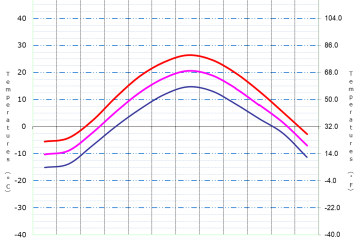Understanding Alberta’s Severe Weather: Trends and Impacts

Introduction
Severe weather events in Alberta have been increasingly making headlines, with significant impacts on the province’s communities, economy, and environment. With climate change altering weather patterns, understanding the trends and consequences of these events is crucial for residents and policymakers alike. This article delves into recent severe weather occurrences in Alberta, highlighting their significance and implications for the future.
Recent Severe Weather Events
In the past year, Alberta has experienced a variety of severe weather incidents, including unprecedented hailstorms, tornadoes, and flooding. For instance, in July 2023, parts of southern Alberta were hit by a powerful hailstorm that caused millions of dollars in damage to homes and vehicles in cities like Calgary and Lethbridge. The storm dropped hailstones as large as golf balls, disrupting both daily life and local businesses.
Earlier in June, a tornado touched down near the town of Fort Saskatchewan, causing injuries and property damage. Tornadoes, though rare in Alberta, are becoming more common due to changes in climate conditions. Additionally, spring flooding in the Bow River basin showcased Alberta’s vulnerability to rising water levels, prompting emergency management teams to prepare and respond effectively.
The Role of Climate Change
Climate scientists suggest that Alberta’s severe weather events are a consequence of broader climate change trends, characterized by fluctuating temperatures and increased variability in precipitation patterns. According to Alberta’s Climate Change Strategy, the province has already seen an increase in the frequency of extreme weather events, which are expected to rise in the coming decades. This presents challenges for infrastructure, agriculture, and emergency preparedness.
Community Preparedness and Response
In light of these developments, Alberta’s government has initiated various preparedness programs aimed at equipping citizens and local authorities to respond effectively to severe weather events. The Alberta Emergency Management Agency (AEMA) has launched public awareness campaigns to educate residents about emergency kits, evacuation plans, and climate resilience practices. As communities brace for more unpredictability, enhancing awareness and resources is vital.
Conclusion
Alberta’s severe weather events are an emerging reality that demands attention and proactive measures from both the government and its citizens. Understanding the patterns and impacts of these events is essential for fostering resilience and preparedness in affected communities. As severe weather becomes a more frequent part of life in Alberta, ongoing investment in infrastructure, emergency response initiatives, and climate adaptation measures will be critical to safeguarding the province’s future.









